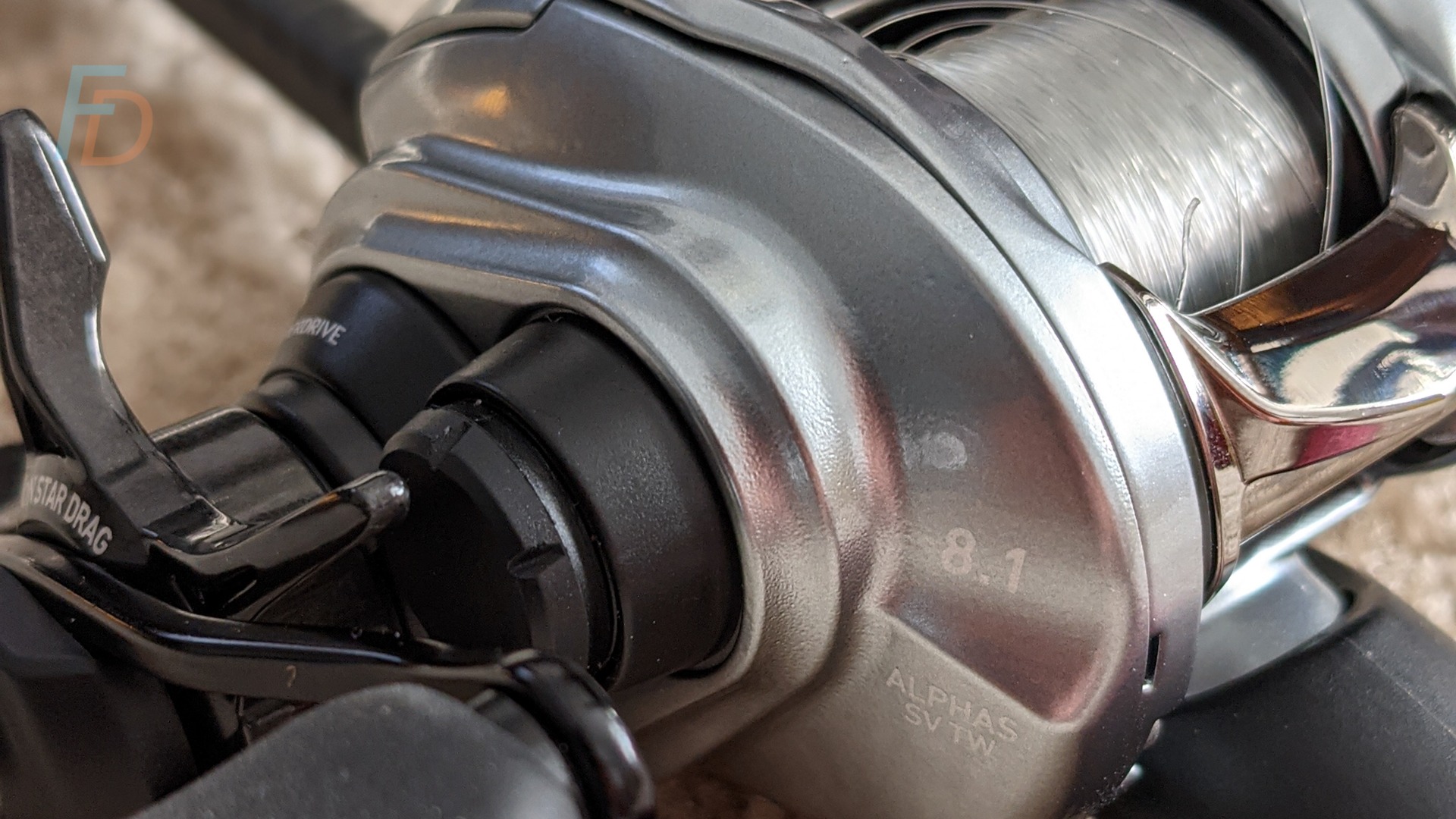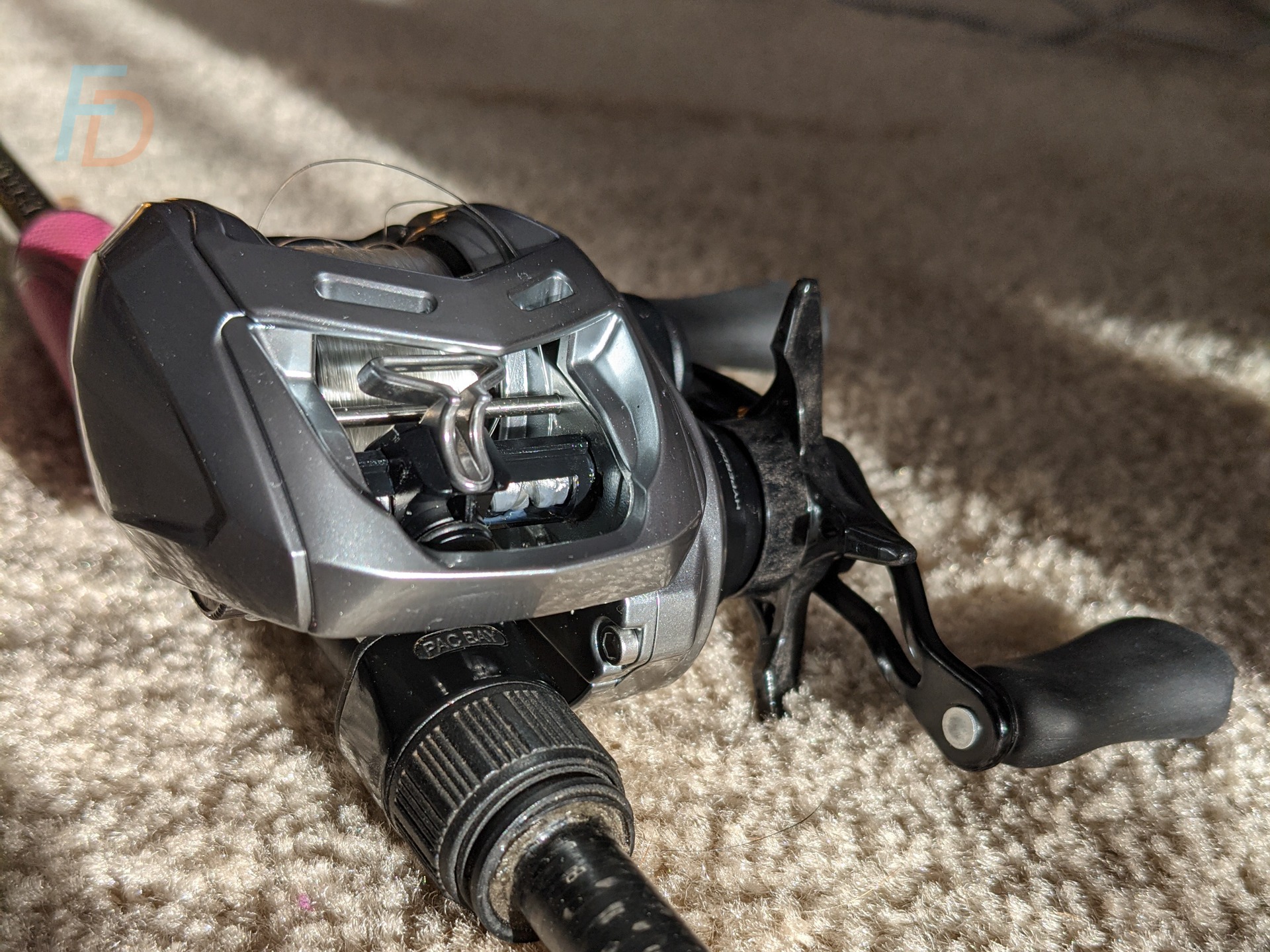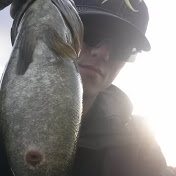Guest Review & Complete rundown of the Daiwa Alphas SV TW 2021 (800XH Left-hand): Photos by the Author

What’s the Daiwa Alphas SV TW 2021 All About?
The Daiwa Alphas SV TW 2021 is my "all" reel. The one reel I put on a medium powered rod and bring with me shore fishing. Bringing multiple setups to cover a wide variety of lures is cumbersome and limits mobility while fishing. The ability to cover wide range of lures with one reel is my favourite part.
The reel feels small and compact. I would rate it in the same class of the Shimano Aldebaran as far as size. The Aldebaran is a touch smaller but, the Daiwa Alphas SV TW 2021 is right behind it.
The reel feels smooth in the retrieve and has a solid feeling to it. The brass gears attribute to that feeling and should last a long time. Even with vibrating baits, I did not feel the Alphas SV TW had any rattling or lack of power. I have the 8.1 gear ratio and medium sized crankbaits felt to pull without any noticeable increase in effort. I would opt for a lower gear ratio for moving baits such as cranks or spinnerbaits.
Unboxing and First Impressions
I became interested in the Alphas SV TW for my “do all” medium setup. I had the Aldebaran 30 MGL but, needed more line capacity and better casting in windy conditions for windy shore fishing. Here is my reaction and first impressions video:
First Casting Impressions of the Daiwa Alphas SV TW 2021
The Alphas SV TW casts better than I anticipated. I was worried the brakes would be restrictive and would limit my casting distance compared to the Aldebaran 30 MGL. Distance is important for shore fishing and the Alphas did not disappoint. All weight ranges seemed natural and comfortable with the Alphas SV TW. You can check out how it went when I tested it on the water for the first time here:
Basic Specifications
Here are the manufacturer specifications for the Daiwa Alphas SV TW 2021:
Where Can I Buy 21 Alphas SV TW (Right Hand or Left Hand)?
At the time of writing, both left and right hand wind versions in "H" and "XH" gear ratios are available for shipping around the world via Aliexpress. The image and button links below are Fishing Discoveries Affiliate links which earns a commission for this website when qualifying purchases are made.
You can check current availability and pricing here:
What Does “SV” Stand For?
According to Daiwa the SV label indicates “Stress-Free Versatile” use of one spool in multiple different fishing applications.
My take on the SV spool braking system is simple.
The braking is easy enough for beginner to use and for experts to appreciate.
This means less experienced anglers can cast confidently knowing the SV brakes are easier to cast with than most braking systems. Experts can use the SV system to combat birdnests in situations like skipping.
The Daiwa SV brake system works by having the inductor (ring on spool for braking) move on a ramp forward or backward motion as well as straight in and out like the Magforce Z brakes do. The forward/backward braking adds the ability for the spool to engage the brakes easier on choppy casts such as skipping to casting in windy conditions. Most SV spools also use lighter powered springs for more sensitive braking.
Overall, the SV system is my preferred braking for fishing. The SV system allows for short range, slow speed casting like pitching to fly flat and effortless and still allows longer casting. This is most noticeable if you are fishing soft plastics where you may go back and forth from pitching docks or laydowns into casting long range to cover flats frequently.
With all the pros of the SV system, there has to be cons right?
For the most part, the pros of the SV system outweigh the cons. Overall casting distance can be less with the SV system due to the sensitive nature of the brakes. The distance most times, is not too noticeable on the water and the increased control the brakes offer at a lower setting can actually give you more distance versus using a non-SV reel and having to turn the brakes higher to accommodate for the wind.
I will add that big bait techniques like swimbaits will do much better with different braking systems. Tossing bigger crankbaits such as typical crankbaits for deep bass fishing do better with a non-SV system. Lighter cranks work well because of their tendency to catch a lot of wind.

Front view of the Daiwa Alphas SV TW 2021 - showing the "T-Wind System" (TWS) line-guide
For most bass fishing applications, I would comfortably say 1/8oz total lure weight is the low end. The reel is more capable than that but, may require more skill, lighter line or other factors. The upper end of the reel would be limited by line capacity and not really the weight of the lure. Using 15lb fluorocarbon to cast a 1oz jig for distance may result in running out of line.
The narrow spool, although deep for its size, only holds 80 m of 15lb mono so, using a braided line will get you better results. This is because braided line is smaller in diameter which keeps your IPT (inches per turn) higher throughout the cast. In other words, because the line is thinner, you don't lose as much diameter from the spool for any given distance of cast. That means, each rotation of the spool pulls in a greater length of line.
Autopsy Deep Dive into the Alphas SV TW 2021
The Alphas SV TW is pretty straightforward to disassemble. The brass gears and variety of gear ratios make it fit into any lineup. The lack of a drag clicker also make the reel easier to put back together. The tiny springs and parts that go into a drag clicker have a tendency to become airborne and never to be seen again...
The use of the hex bolt instead of the typical Phillips-head style is genius. The hex-bolt head is far less likely to strip or show signs of wear. It also adds an industrial look to the reel. There are no tricky, hard to get to screws to access. The TWS design doesn’t complicate disassembly too much either. I always suggest taking pictures or recording a video when disassembling reels if you are unsure. Schematics are handy as well. If you do have a paper copy that came with the reel, you can always go to Plat.co.jp and click through to find the schematics in a PDF.
For those that like to tinker with their reels, the only spool option I know of as of this writing is from Roro Lure. (this link - and the button below - is Fishing Discoveries' affiliate - commission link; which doesn't cost you extra - and helps to support the blog).
Although the Alphas SV TW spool is 32mm in diameter like the SS AIR, SV LIGHT and other 32mm spool reels, the spool on the Alphas SV TW is more narrow than the others that were mentioned. With spacers, the Alphas SV TW spool can fit into those other reels but, not vice versa.
Summing up the Daiwa Alphas SV TW 2021
The versatility of the SV system allows you to use the same reel for multiple applications. My favorite part of the SV system is that I can go from long-casting, pitching and skipping all without adjusting brake dial settings or cast control knob.
I sold my Shimano Aldebaran 30 HG (JDM version) to fund the Alphas SV TW. Both reels I would say are in the same class performance-wise, with the Aldebaran being lighter in weight. The SV braking system handles wind noticeably better as well as skipping.
Where Can I Get One?
Again, for convenience, you can check pricing and availability via FD's affiliate links here:
How can folks connect and keep up with Hobie-wan Kenobi?

Hobie-Wan Kenobi
I am on YouTube, Instagram and active on the TackleTour forum. I am pretty responsive on social media and enjoy assisting everyone.
I also enjoy reading what opinions others have about tackle and fishing as well.
More Baitcasting Content on Fishing Discoveries...
If you want more baitcasting and lure fishing content - check out what we've got here:
Ultralight Baitcaster Fishing (BFS)
Baitcaster 5-way Cast Battle & Results
Fishband Clamber HM06 Ultralight Baitcaster Reel
How to Set up a Baitcaster Reel
Bait Finesse Casting: How to Get Good


[…] Daiwa Alphas SV TW 2021: Review & “Autopsy” by Hobie-Wan Kenobi […]